Home>Dining>Events & Etiquette>What Common Table Manners Are Unique To The US?
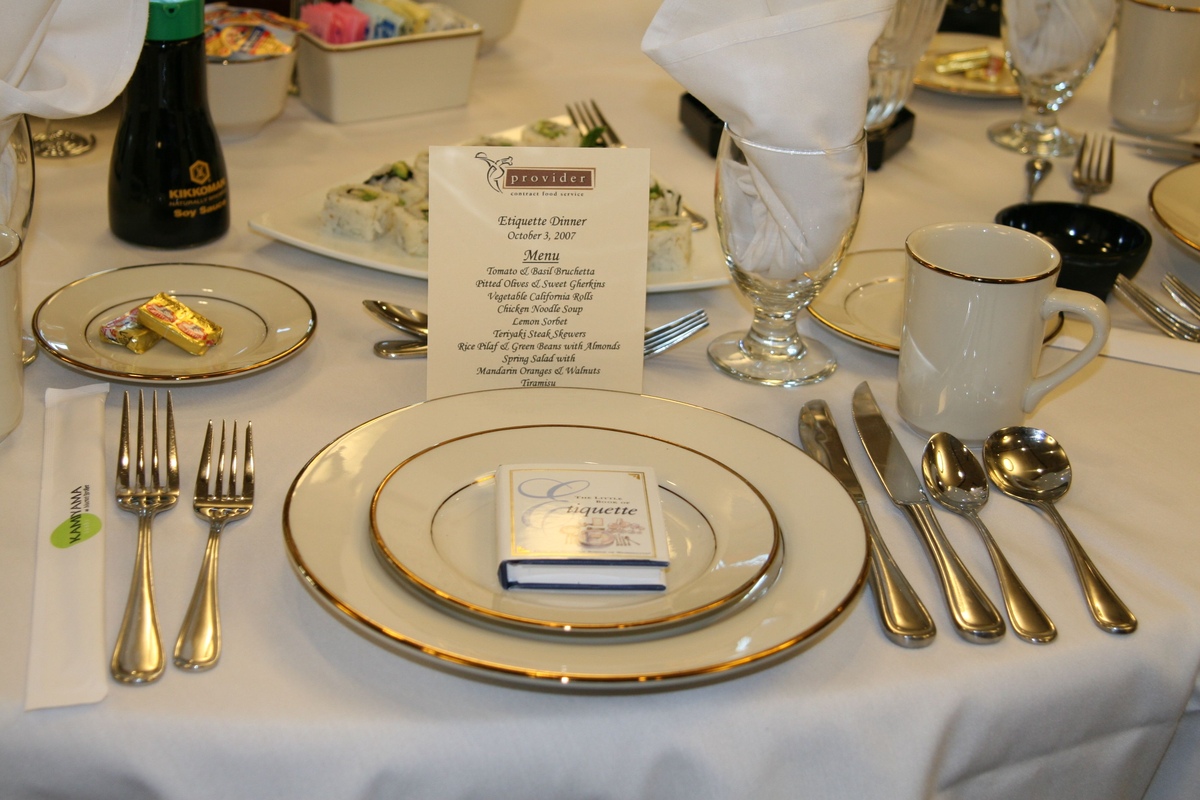

Events & Etiquette
What Common Table Manners Are Unique To The US?
Modified: January 6, 2024
Discover the unique table manners that distinguish the US from other countries. Explore events etiquette and learn about American dining customs.
(Many of the links in this article redirect to a specific reviewed product. Your purchase of these products through affiliate links helps to generate commission for Storables.com, at no extra cost. Learn more)
Introduction
Table manners play a significant role in social interactions and are often seen as a reflection of one’s upbringing and cultural norms. While there are general guidelines that are universally accepted, each country has its distinct set of table manners that add to its unique charm. In the United States, table manners are heavily influenced by European traditions but have evolved over time to accommodate American customs and preferences.
The importance of table manners cannot be overstated. They create an atmosphere of respect, enhance social interactions, and contribute to a pleasant dining experience. Understanding and practicing appropriate table manners can make a significant difference, whether you’re attending a formal dinner party, a business lunch, or even a casual gathering with friends and family.
America, with its diverse cultural heritage, has developed its own set of unique table manners that set it apart from other countries. In this article, we’ll explore some common table manners that are distinctively American, showcasing the etiquette that Americans apply when dining.
Key Takeaways:
- Embrace the “zigzag” method of utensil usage and bread-butter etiquette to navigate American dining with ease and grace, contributing to a harmonious and enjoyable dining experience.
- Show appreciation for good service by understanding and adhering to the tipping etiquette, fostering a positive and respectful relationship between customers and service staff.
Read more: What Are Table Manners?
The Importance of Table Manners
Table manners serve as a social language, communicating respect, consideration, and refinement. They create a sense of order and harmony at the dining table, allowing for a more enjoyable and pleasant dining experience for everyone involved.
Good table manners are not just about following a set of strict rules; they reflect our thoughtfulness towards others. By practicing proper etiquette, we show respect for both our fellow diners and the hosting party. It demonstrates our understanding of social norms and our ability to adapt to different situations.
Table manners also play a role in building and maintaining relationships. When we exhibit good manners, we make a positive impression on others. This can lead to stronger connections, whether in personal or professional settings. Employers often judge individuals based on their etiquette skills during business meals, and polished table manners can give you an edge in such situations.
Furthermore, practicing good table manners helps to create a pleasant and comfortable dining environment. It ensures that everyone can enjoy their meal without distractions or disruptions. By observing proper etiquette, such as chewing with your mouth closed, using utensils correctly, and maintaining courteous conversation, you contribute to a positive dining ambiance for both yourself and those around you.
Table manners also play a significant role in instilling discipline and self-control. By learning and adhering to the etiquette guidelines, we develop the ability to control our actions and impulses. This self-discipline can extend beyond the dining table and positively impact other areas of our lives, such as work, relationships, and personal growth.
Overall, table manners are an essential aspect of social etiquette and are essential for cultivating a sense of respect, consideration, and refinement. By practicing good table manners, we not only enhance our own dining experiences but also contribute to a more harmonious and enjoyable atmosphere for everyone involved.
American Table Manners: Unique Traits
American table manners have their roots in European traditions, but they have evolved and developed their own unique characteristics over time. These distinctive traits reflect American culture, values, and preferences. Let’s explore some of the notable American table manners that set it apart from other countries:
- Utensil Usage: In the United States, the “zigzag” method of using utensils is more common. This means that the fork is held in the left hand and the knife in the right hand during the cutting of food, and then the fork is switched to the right hand for eating. This is in contrast to the European “continental” style, where the fork remains in the left hand throughout the meal.
- Bread and Butter Etiquette: Americans have a specific way of handling bread and butter at the table. It’s considered appropriate to tear off bite-sized pieces of bread and butter them individually, rather than buttering an entire slice at once. This practice ensures that the butter is evenly distributed and prevents the butter from melting and becoming messy on the plate.
- Napkin Etiquette: In American dining etiquette, the napkin is placed on the lap immediately after sitting down. It is considered impolite to tuck the napkin into the collar or shirt, as this is seen as messy or childish. The napkin should be used to gently dab or wipe the mouth, and it should be placed neatly on the left side of the plate when temporarily not in use. At the end of the meal, it is polite to leave the napkin slightly crumpled on the left side of the plate.
- Passing Food at the Table: When sharing dishes at the table, Americans tend to pass them counterclockwise, starting to the left. This method ensures that the food flows smoothly and prevents confusion or disruption. It is considered impolite to reach across others to grab food or to skip someone in the passing order.
- Dining Etiquette in Restaurants: In American restaurants, it is customary to wait for everyone at the table to be served before starting to eat. This shows respect for the entire dining party and prevents awkward moments. Additionally, it is common to place the napkin on the chair instead of the table if you need to leave temporarily during the meal. This signals that you will return and prevents the server from prematurely clearing your plate.
- Tipping Etiquette: Tipping is a significant aspect of American dining culture. It is customary to leave a gratuity of 15% to 20% of the total bill for good service. This practice acknowledges the service provided by the waitstaff and is seen as a way of showing appreciation.
- Conversation Topics at the Table: In American dining settings, it’s common for a wide range of topics to be discussed at the table. Americans often engage in friendly conversations about current events, sports, entertainment, and personal experiences. However, certain topics such as politics, religion, or controversial issues are best avoided to maintain a positive and enjoyable atmosphere.
These unique American table manners showcase the cultural nuances of the country. By understanding and practicing these customs, both locals and visitors can fully immerse themselves in the American dining experience.
Utensil Usage
Utensil usage is an important aspect of American table manners and follows a specific technique known as the “zigzag” method. Unlike the “continental” style commonly used in Europe, where the fork remains in the left hand throughout the meal, Americans switch their forks to their right hand after cutting their food.
When a meal starts, the fork is held in the left hand and the knife in the right hand to cut the food. After cutting a bite-sized portion, the knife is placed on the edge of the plate, and the fork is transferred to the right hand to bring the food to the mouth. This method allows for smoother eating and is believed to be more efficient.
Another notable utensil usage in the United States is the preference for using a steak knife for cutting foods, even when a regular knife might suffice. This is often seen in more casual dining situations or when eating grilled meats. The steak knife, with its sharp, serrated edge, allows for easier cutting through tougher cuts of meat.
It’s important to note that utensil usage may vary depending on the formality of the occasion. In formal settings, such as upscale restaurants or formal dinner parties, American diners are more likely to adhere to a modified version of the “continental” style, keeping the fork in the left hand and the knife in the right hand throughout the meal.
Understanding and practicing appropriate utensil usage is important to maintain proper dining etiquette in the United States. By following the “zigzag” method and using a steak knife when necessary, individuals can navigate American table manners with ease and grace.
Bread and Butter Etiquette
Bread and butter are common accompaniments to many meals in the United States, and there is a specific etiquette around their handling and consumption. When it comes to bread and butter, Americans follow a unique approach that is different from other countries.
In American dining culture, it is considered proper to tear off bite-sized pieces of bread rather than buttering an entire slice at once. This practice ensures that the butter is evenly distributed and prevents the bread from becoming overly saturated or messy on the plate.
When buttering the bread, it is customary to take a small piece, hold it in one hand, and apply butter to it using a butter knife. This method allows for a controlled amount of butter to be spread on each piece of bread. It is considered impolite to take a large piece of bread, butter it all at once, or to take a bite directly from the slice of bread before buttering it.
Furthermore, it is important to use the butter knife provided rather than using your own regular knife to butter the bread. This helps to maintain proper hygiene and avoids mixing flavors from different foods.
When dining in a formal setting, there may be a designated bread plate or side plate for each individual at the table. In this case, it is polite to tear off a small piece of bread and place it on your side plate before buttering it. This ensures that the bread does not touch the main plate and avoids any potential cross-contamination of flavors.
If you are unsure about the specific bread and butter etiquette at a particular dining occasion, it is always best to observe others at the table and follow their lead. By respecting these customs, you will demonstrate your understanding of American dining traditions and show consideration for your fellow diners.
Read more: What Are Singapore’s Table Manners?
Napkin Etiquette
Proper napkin etiquette is an essential aspect of American table manners. It demonstrates respect for the dining experience and consideration for fellow diners. Understanding how to handle the napkin correctly can elevate your dining etiquette. Here are some key points to keep in mind:
Upon sitting down at the table, it is customary to immediately place the napkin on your lap. For men, it is generally best to unfold the napkin and let it rest on your thighs. Women might prefer to leave the napkin neatly folded and place it on their lap, securing it with one hand. Regardless of the method, the napkin should be reachable but not overly conspicuous.
During the meal, the napkin should be used as necessary to gently dab or wipe the mouth. It is also acceptable to blot the lips with the napkin after taking a sip of a beverage. However, it is important not to wipe or scrub the mouth excessively with the napkin, as this can be seen as impolite or unappetizing.
If you need to leave the table temporarily during the meal, do not place the napkin on the table. Instead, it is proper etiquette to leave the napkin neatly folded on the left side of your plate. This signals to the server that you will return and prevents them from prematurely clearing your plate.
At the end of the meal, when everyone has finished eating, it is customary to signal that you are finished by placing your napkin neatly on the left side of your plate. The napkin should be slightly crumpled, but not wadded up, to signify that you are done and the meal is complete.
It is considered impolite to tuck the napkin into your collar or shirt, as this may be seen as messy or childish. Instead, the napkin should remain on your lap throughout the meal and should not be used as a makeshift bib.
Remember to always be cautious and avoid dropping or spilling food on your napkin. If an accident does occur, discreetly ask a server for a replacement or temporarily fold the soiled part of the napkin inward to conceal any stains.
Practicing proper napkin etiquette is a small but important gesture that portrays your respect for the dining experience and consideration for those around you. By adhering to these guidelines, you will demonstrate your understanding of American table manners and make a positive impression on your fellow diners.
In the US, it is common to place your napkin on your lap when dining, keep your elbows off the table, and wait for everyone to be served before starting to eat.
Passing Food at the Table
Passing food at the table is a common practice in American dining, especially when sharing dishes or family-style meals. Understanding the etiquette of passing food is important to maintain a smooth and harmonious dining experience. Here are some key points to keep in mind:
When passing food, it is customary to do so in a counterclockwise direction, starting from the left. This means that if the dish is on your left side, you should take it and pass it to the person on your right. This method ensures that the food flows in a consistent and organized manner around the table.
When receiving a dish, it is polite to say “thank you” to the person passing it to you. It shows appreciation for their gesture, even if it’s a small gesture like passing the salt or a condiment.
It is considered impolite to reach across other diners or stretch out to grab a dish. Instead, it is best to patiently wait for the dish to come to you. This allows for everyone to have an equal opportunity to partake in the meal.
If you are unsure whether to take a portion of the dish being passed, it’s perfectly acceptable to politely decline by saying, “No, thank you.” This ensures that everyone gets a fair share of the food, and it’s better to decline than to take more than you can eat.
In more formal dining settings, the server may be responsible for passing certain dishes instead of the guests. In this case, it is important to wait for the server to offer the dish to you before taking a portion. Be patient and polite, avoiding any attempts to reach for the food before it is properly presented.
It’s worth noting that the practice of passing food may vary depending on the specific occasion or cultural context. Some meals may involve self-service where guests help themselves to the dishes directly from the table or buffet. In such cases, it is important to maintain a respectful and orderly approach, ensuring that everyone has access to the food.
By following these guidelines and observing the proper etiquette when passing food, you contribute to a seamless and enjoyable dining experience. This practice fosters a sense of community and camaraderie, allowing everyone at the table to partake in the delicious meal together.
Dining Etiquette in Restaurants
When dining in restaurants, whether it’s a casual eatery or an upscale establishment, there are certain etiquette practices to keep in mind to ensure a pleasant and enjoyable experience for everyone. Here are some key points to remember when it comes to dining etiquette in restaurants:
Wait for Everyone to Be Served: It’s considered polite to wait until everyone at the table has been served their food before starting to eat. This shows respect for the entire dining party and avoids any potential awkwardness. If you’re served first, it’s best to wait patiently until the others have their meals.
Use Utensils Properly: In American dining, it’s customary to use utensils rather than eating with your hands, unless it’s a specific finger food or handheld dish. Use the appropriate utensils for each course, such as a fork for salads and the main course, and a soup spoon for soups or broths. Do not wave utensils in the air or play with them during the meal, as it may be considered impolite or distracting.
Chew with Your Mouth Closed: It’s good manners to chew your food with your mouth closed. Avoid talking or making loud noises while chewing, as it can be unappetizing for others. Take small and manageable bites to make the dining experience more pleasant for yourself and those around you.
Mindful Cell Phone Usage: While dining in a restaurant, it’s courteous to minimize cell phone usage. Keep your phone on silent or vibrate mode and avoid distractions from calls or messages. If you must use your phone, excuse yourself from the table and step away to maintain a respectful and present dining atmosphere.
Respect Server’s Instructions: When interacting with the server, listen attentively to their instructions or specials of the day. If they suggest a certain dish or provide recommendations, consider their expertise. Treat the server with respect and politeness, using “please” and “thank you” when making requests or expressing gratitude. Remember to wait patiently if the server is attending to other tables.
Navigating the Wine List: If you choose to order wine in a restaurant, the sommelier or server may present the wine list to you. Take your time to peruse the list, and if you need assistance or recommendations, don’t hesitate to ask. Let the server know your preferences and budget, and they can guide you in making an appropriate choice. If someone at the table is designated as the host or has been invited to select the wine, defer to their judgment and offer any preferences to guide their decision if necessary.
Be Mindful of Table Space: It’s important to be mindful of the available space on the table. Avoid spreading your belongings, such as bags or coats, onto neighboring seats or the table itself. Use the space provided efficiently to ensure a comfortable and organized setting for everyone.
Express Appreciation: At the end of the meal, express your appreciation to the server for their service by leaving a gratuity. In the United States, it is customary to leave a tip of 15% to 20% of the total bill. Adjust the amount based on the quality of service received. Make sure to settle the bill promptly and thank the server before leaving the establishment.
By following these dining etiquette practices, you can create a positive and enjoyable dining experience in restaurants. Remember that good manners go beyond just oneself but also create a respectful and pleasant atmosphere for both fellow diners and restaurant staff.
Tipping Etiquette
Tipping is an integral part of American dining culture, and understanding the appropriate tipping etiquette is essential to show appreciation for good service. Here are some key points to keep in mind when it comes to tipping:
Gratuity Percentage: In the United States, it is customary to leave a gratuity of 15% to 20% of the total bill. The tip serves as a way to acknowledge and appreciate the service provided by the waitstaff. If the service exceeded your expectations or was exceptional, you may consider leaving a larger tip as a gesture of gratitude.
Calculating the Tip: To calculate the tip amount, multiply the total bill (before tax) by the desired percentage. For example, if the bill comes to $100 and you want to leave a 20% tip, multiply $100 by 0.20 to get a tip amount of $20. Keep in mind that tax, discounts, or promotions should not be included in the calculation of the tip.
Tipping in Cash: It is customary to leave the tip in cash rather than adding it to the credit card payment. This allows the server to receive their gratuity immediately and directly. If you prefer to tip with a credit card, check if the establishment has an option to add the gratuity directly on the receipt, and ensure that it goes to the server instead of being shared among the staff.
Recognizing Good Service: If you receive exceptional service, consider expressing your appreciation beyond the standard tip percentage. Adding a little extra to the tip amount or leaving a positive comment on the receipt can be a thoughtful way to recognize the effort and dedication of the waitstaff.
Exceptions to Tipping: While tipping is customary in most dining establishments, there may be exceptions to the typical gratuity expectations. Some high-end restaurants and certain catering services may include a service charge or gratuity as part of the bill. Always review the bill or ask the server if a gratuity has already been included before adding an additional tip.
Tipping for Takeout or Delivery: When picking up food for takeout, it is not necessary to leave a tip unless there was exceptional service or an extra effort made by the staff. However, if you order food for delivery, it is customary to tip the delivery person 10% to 15% of the total bill to show appreciation for their service and effort.
Appreciating the Entire Dining Experience: It’s important to remember that tipping extends beyond just the waitstaff. Consider leaving a gratuity for other service providers who contribute to your dining experience, such as bartenders, coat check attendants, or valet parking attendants.
Tipping not only acknowledges the hard work of the service staff but also fosters a positive and respectful relationship between customers and those in the service industry. By adhering to the appropriate tipping etiquette, you show gratitude for the service provided and contribute to a harmonious and grateful dining culture.
Read more: What Are The Table Manners In Japan?
Conversation Topics at the Table
Engaging in conversation at the dining table is an important social aspect of American dining culture. While there is no strict set of rules regarding conversation topics, it’s always good to be mindful of creating a pleasant and inclusive atmosphere. Here are some guidelines for choosing appropriate conversation topics at the table:
Current Events: Discussing current events can be a great way to initiate conversation. However, it’s important to be aware of the potential sensitivity of certain topics, such as politics or controversial issues. If discussing current events, try to focus on more lighthearted or non-controversial subjects.
Sports: Sports are a popular topic of conversation in many American dining settings. Discussing recent games, teams, or upcoming tournaments can be a fun and engaging way to connect with others at the table. However, be mindful of not monopolizing the conversation or assuming that everyone present shares the same level of interest in sports.
Entertainment: Movies, television shows, and music are often enjoyable and safe conversation topics. Sharing recommendations or discussing recent releases can spark interesting and light-hearted conversations. Be open to different tastes and opinions to foster an inclusive and diverse conversation.
Travel and Experiences: Sharing travel stories or talking about personal experiences can be a great way to create connections and learn more about each other. People often enjoy discussing their favorite destinations, memorable trips, or unique cultural encounters. These conversations can lead to exciting and meaningful exchanges.
Foods and Culinary Experiences: Discussing food and culinary experiences is a popular topic during meals. Sharing thoughts on different cuisines, favorite recipes, or culinary adventures can be an enjoyable way to connect with fellow diners. It’s a chance to explore different tastes and cultures, and perhaps even gain some new gastronomic recommendations.
Family and Personal Interests: In more intimate settings, discussing family, hobbies, or personal interests can help build deeper connections. Sharing stories about loved ones, hobbies, or personal achievements can create a warm and friendly atmosphere. However, be cautious not to pry or make anyone uncomfortable by delving into sensitive or overly personal subjects.
It’s important to be aware of the overall mood and dynamics of the table when choosing conversation topics. Pay attention to the reactions of others, and be respectful of any cues that might indicate discomfort or disinterest. It’s also wise to avoid topics that are overly negative, divisive, or that may offend specific individuals or groups.
Remember, the goal is to create a pleasant and inclusive atmosphere where everyone feels comfortable and engaged. By being considerate of others and choosing conversation topics that promote positive interaction, you can contribute to an enjoyable dining experience for all.
Conclusion
Table manners are a crucial aspect of any society’s culture, and the United States has its own unique set of dining etiquette that reflects its diverse traditions and values. Understanding and practicing good table manners not only demonstrate respect and consideration for others, but also contribute to a positive dining experience for everyone involved.
American table manners, influenced by European customs, have evolved over time to accommodate the preferences and customs of the country. From utensil usage to bread and butter etiquette, napkin usage, passing food at the table, dining etiquette in restaurants, tipping practices, and conversation topics, these distinct aspects shape the American dining experience.
By adhering to the “zigzag” method of utensil usage, tearing off bite-sized pieces of bread for buttering, handling the napkin with care, passing food counterclockwise, respecting server’s instructions, tipping according to customs, and engaging in appropriate conversation topics, individuals can navigate American table manners with ease and grace.
Table manners not only contribute to a more enjoyable and harmonious dining experience but also serve as a way to connect with others, build relationships, and demonstrate cultural awareness. Practicing proper etiquette shows respect for others and sets a positive example for future generations.
As we explore and appreciate the unique traits of American table manners, let us remember the role they play in creating a pleasant dining atmosphere, promoting communication, and fostering a sense of unity. By embodying these customs and embracing the diverse cultural aspects of American dining, we can celebrate the joy of sharing a meal together.
So, next time you find yourself dining in the United States, embrace the American table manners, relax, and enjoy the rich tapestry of flavors, conversations, and traditions that make the dining experience truly memorable.
Frequently Asked Questions about What Common Table Manners Are Unique To The US?
Was this page helpful?
At Storables.com, we guarantee accurate and reliable information. Our content, validated by Expert Board Contributors, is crafted following stringent Editorial Policies. We're committed to providing you with well-researched, expert-backed insights for all your informational needs.
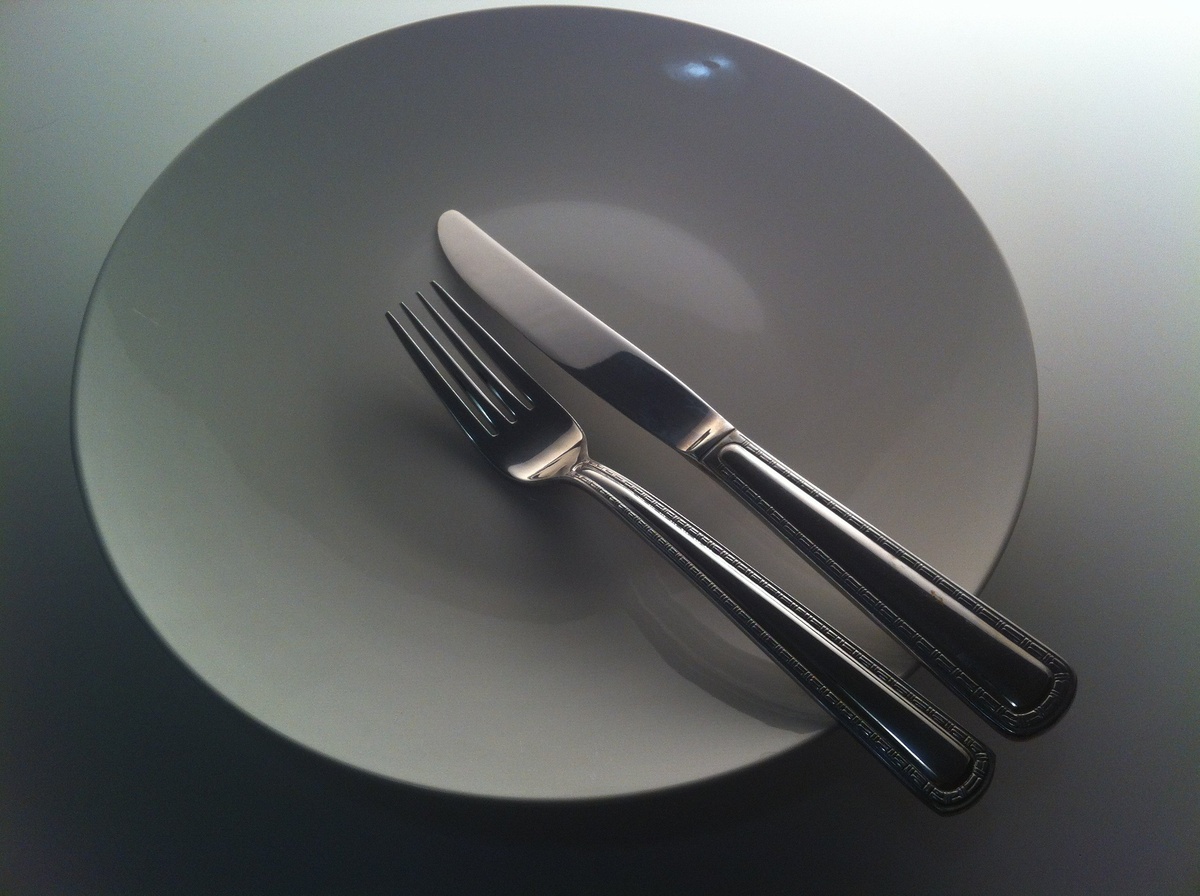
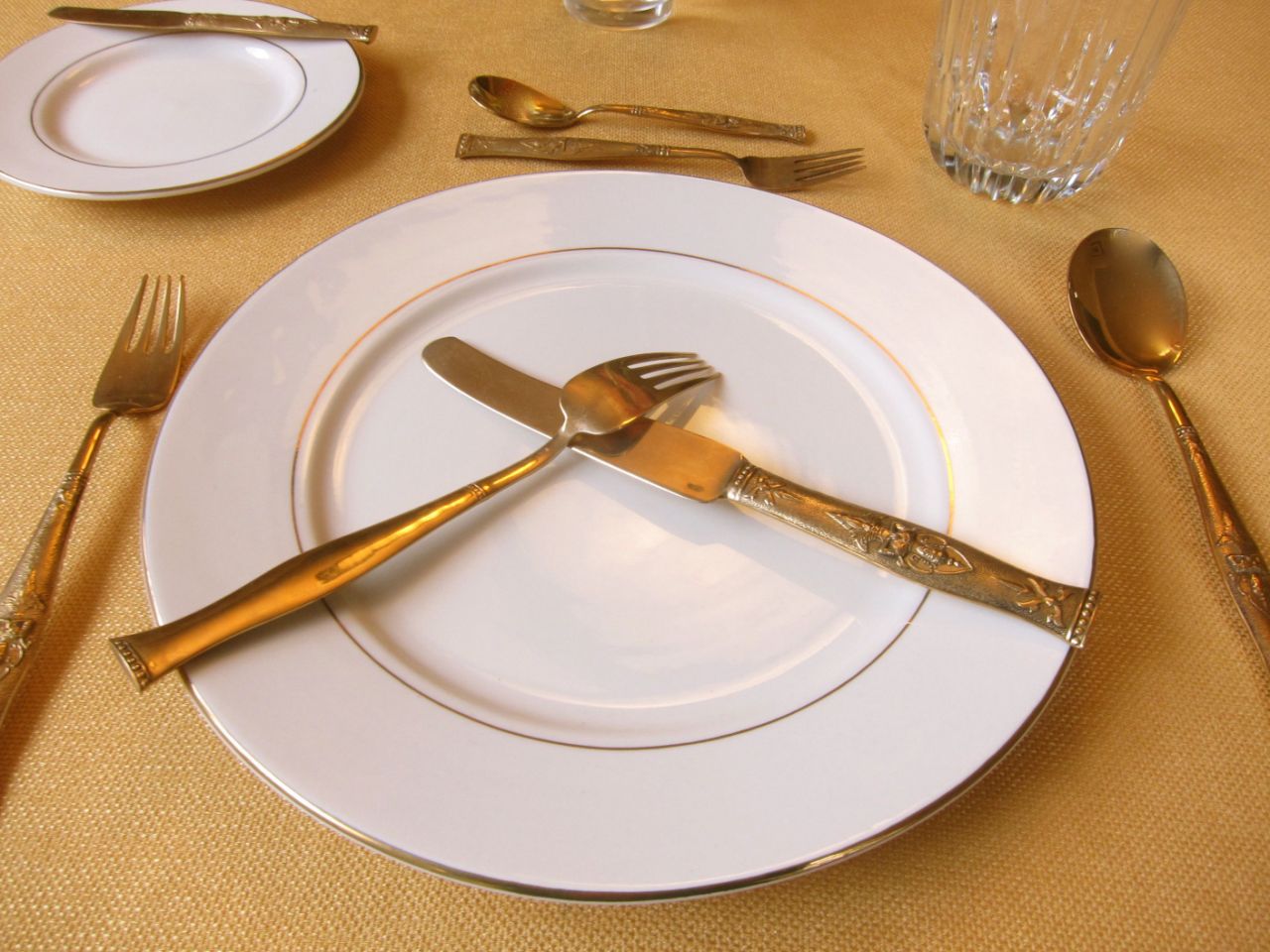



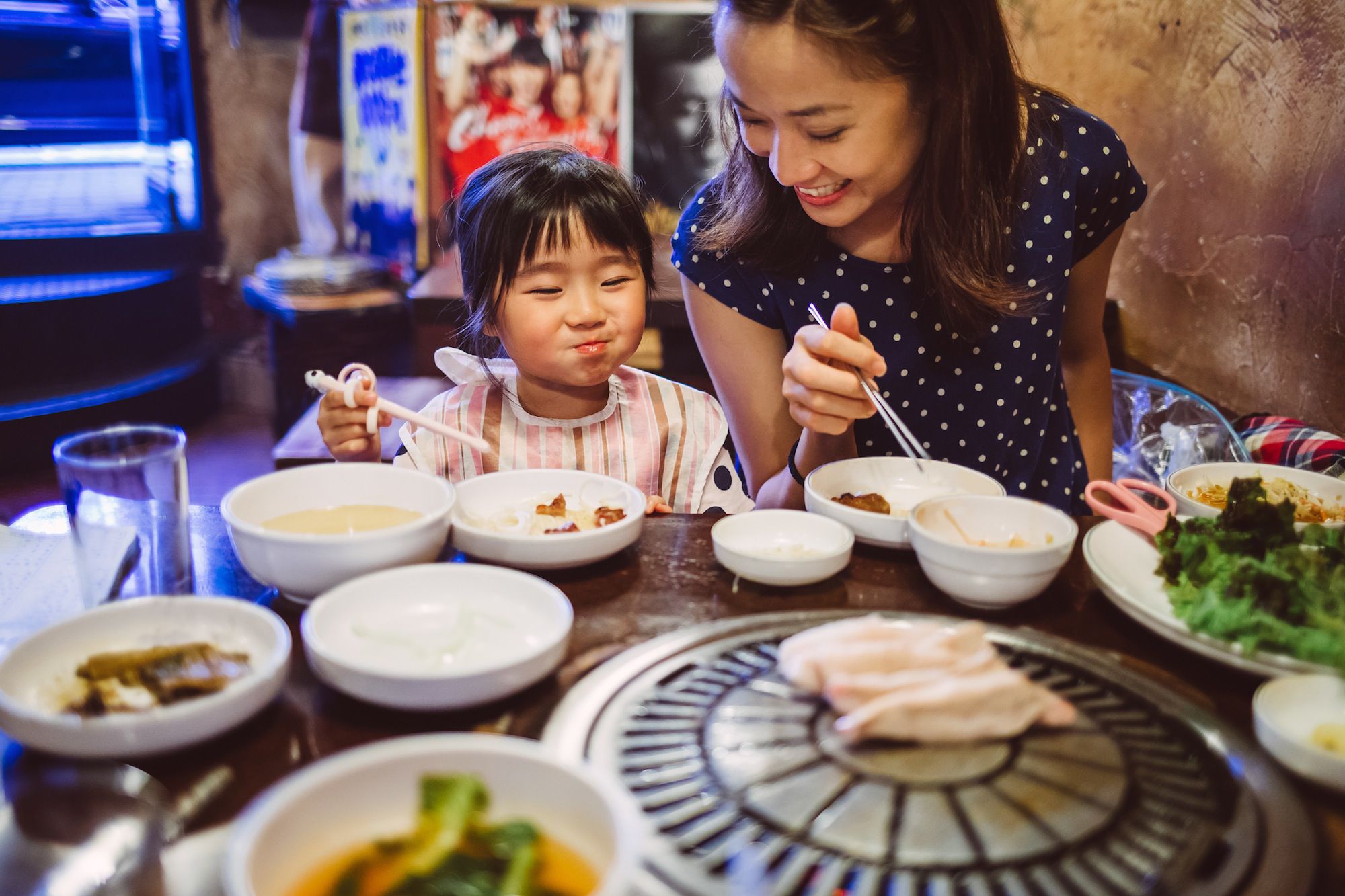
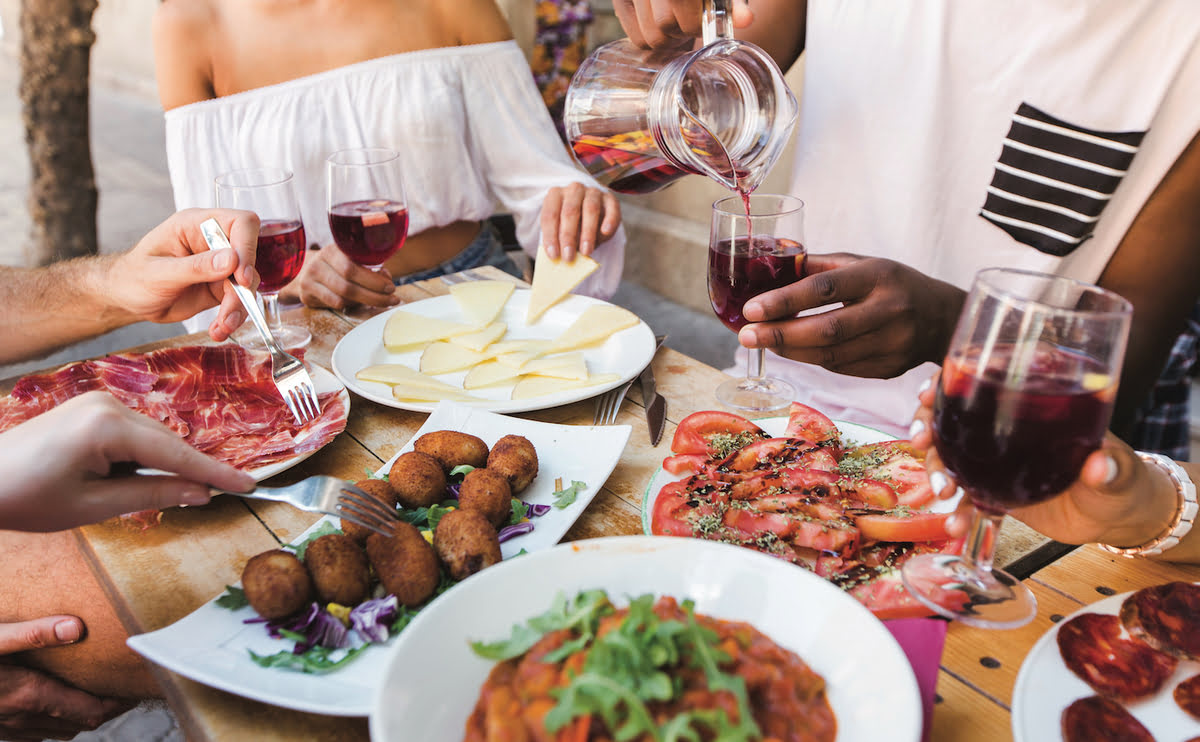





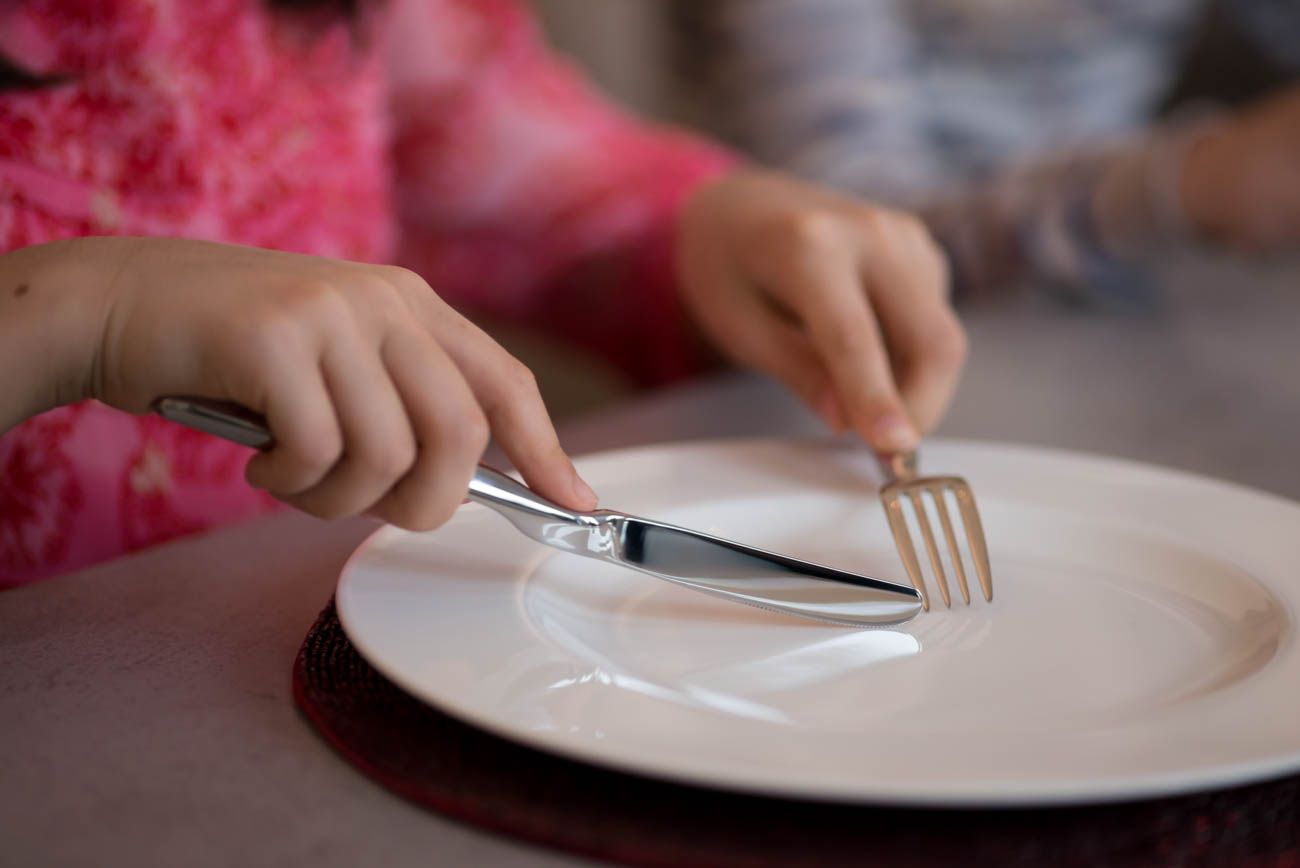

0 thoughts on “What Common Table Manners Are Unique To The US?”